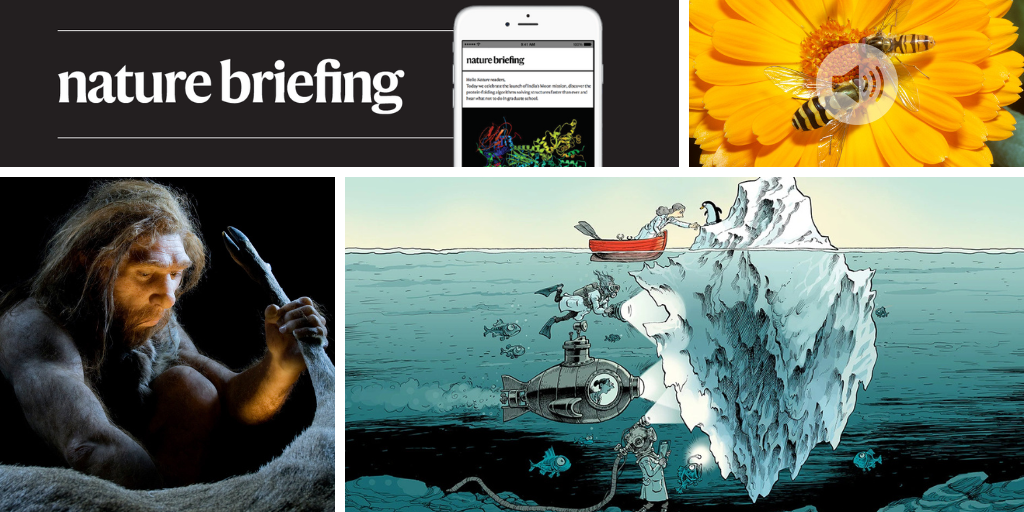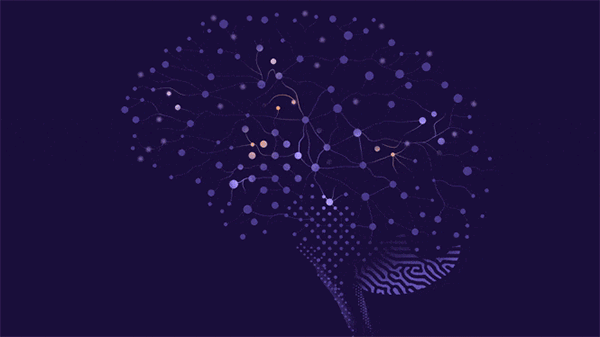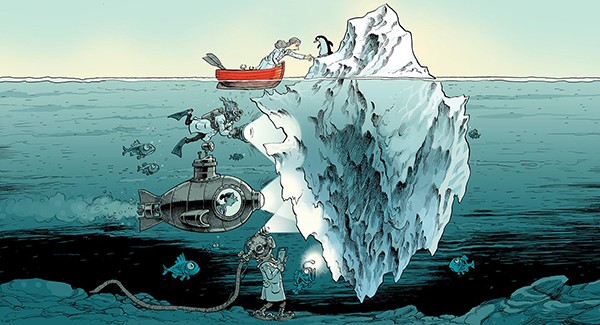You have full access to this article via your institution.
Hello Nature readers, would you like to get this Briefing in your inbox free every day? Sign up here.
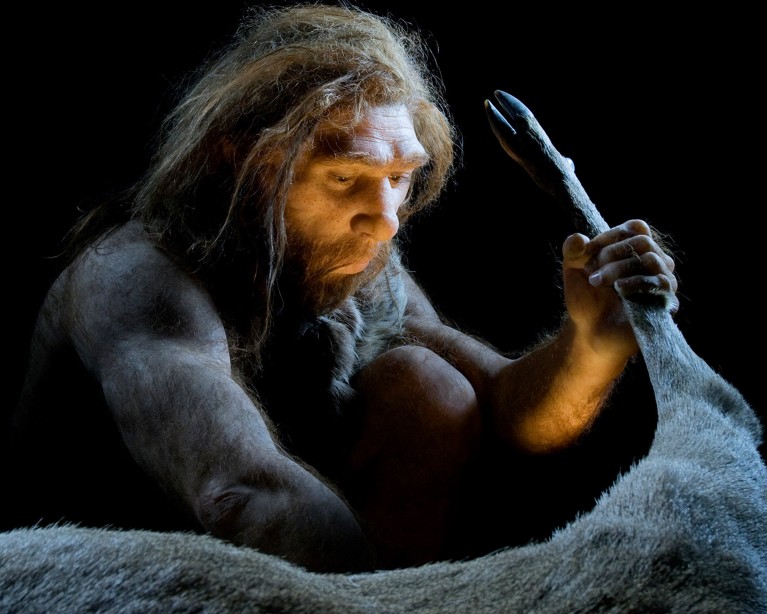
Archaeological evidence suggests that Neanderthals (artist’s impression) were capable of processing animal bones to extract fat.Credit: S. Plailly/E. Daynes/Science Photo Library
Archaeologists have uncovered evidence that Neanderthals rendered fat from bones 125,000 years ago — 100,000 years earlier than oldest known fat rendering by modern humans. Thousands of bone fragments and other remains from Neumark-Nord in Germany suggest a large-scale operation in which animals were purposely transported to the area. “The social organization might be different, the technology might be different, but how you have to live in such a landscape to make your living and to survive and prosper is absolutely comparable to modern hunter-gatherers,” says zooarchaeologist and study co-author Lutz Kindler.
Reference: Science Advances paper
Japan’s unique legal requirement that couples share the same family name after marriage causes a host of problems for female scientists. A survey of more than 7,500 researchers revealed that the law creates confusion when obtaining patents, qualifications and grants; when travelling abroad and when it comes to attributing their whole body of work. The century-old law doesn’t dictate which party must change their name, but in practice, the rule overwhelmingly affects women — 95% of married women in Japan legally change their name to their husband’s.
A “tour de force” experiment has revealed yet another mind-bending outcome of quantum physics. Quantum tunnelling — when a particle skips through a barrier that classical physics would forbid — happens faster when objects have less energy. The counter-intuitive result contributes to a long-standing debate about how to define tunnelling time, for which there is no single description, and how fast the process occurs.
Go deeper with an expert analysis by quantum scientists Alessandro Fedrizzi and Fabio Biancalana in the Nature News & Views article (7 min read)
Only the third known interstellar object to enter our Solar System will swing so close to Mars that it might be visible to the Mars Reconnaissance Orbiter. (No need to worry: it will not come close to Earth.) The comet-like body — called either C/2025 N1 or 3I/ATLAS — is now flying past Jupiter. Astronomers will have their telescopes glued to the visitor for information about the conditions where it formed and how many such objects might be out there.
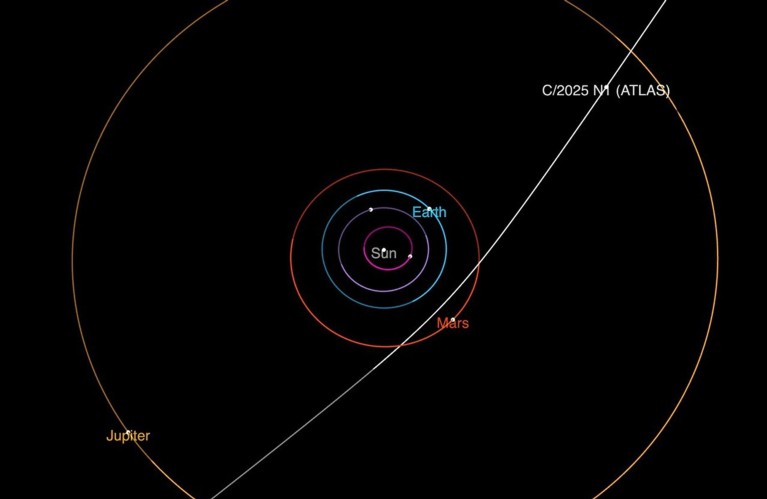
Only the third known interstellar object to enter our Solar System will swing so close to Mars that it might be visible to the Mars Reconnaissance Orbiter.Credit: NASA/JPL-Caltech
Features & opinion
A miner learns to appreciate the beauty of home in Wherever we go in this system, there we are.
Andrew Robinson’s pick of the top five science books to read this week includes an exploration of real-life zombies and a call to replace gross domestic product with a more accurate measure of economic success.
Some creatures have evolved to mimic the appearance of another organism that’s less palatable to predators — but in some cases, this mimicry is more of a poor imitation. For example, some hoverflies look similar to, but not exactly like, wasps. So why haven’t they gone the whole nine yards? To find out, researchers 3D printed a range of wasp-like insects and presented them to predators. They found that birds quickly learned how to discern the real wasp models from the mimics, but invertebrate predators were more easily fooled. The results suggest that the types of predator in an organism’s environment play a part in how good a copycat they need to become.
Nature Podcast | 27 min listen
Subscribe to the Nature Podcast on Apple Podcasts, Spotify or YouTube Music, or use the RSS feed.
Today Leif Penguinson is becoming one with nature in the La Quebrada de Santa Bárbara conservation area, Mexico. Can you find the penguin?
The answer will be in Monday’s e-mail, all thanks to Briefing photo editor and penguin wrangler Tom Houghton.
This newsletter is always evolving — tell us what you think! Please send your feedback to [email protected].
Thanks for reading,
Flora Graham, senior editor, Nature Briefing
With contributions by Jacob Smith
• Nature Briefing: Careers — insights, advice and award-winning journalism to help you optimize your working life
• Nature Briefing: Microbiology — the most abundant living entities on our planet — microorganisms — and the role they play in health, the environment and food systems
• Nature Briefing: Anthropocene — climate change, biodiversity, sustainability and geoengineering
• Nature Briefing: AI & Robotics — 100% written by humans, of course
• Nature Briefing: Cancer — a weekly newsletter written with cancer researchers in mind
• Nature Briefing: Translational Research — covers biotechnology, drug discovery and pharma


